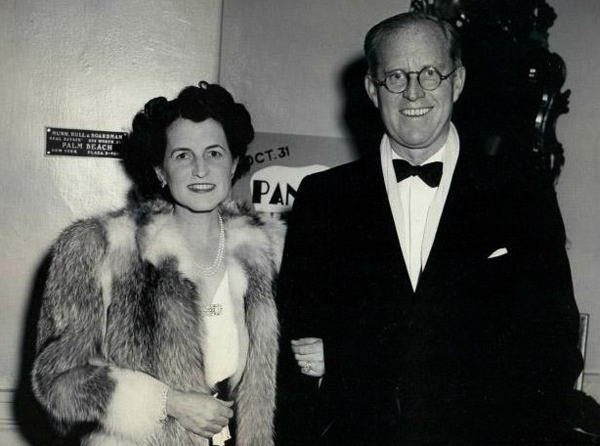Sins of the Father

Joseph Kennedy with wife Rose. / Photo via Wikimedia Commons
It would take a hard heart not to be moved by the plight of Joseph Kennedy during the final years of his life. By 1969, when he died at the age of 81, he had outlived four of his nine children. And for eight years he’d had to bear his pain in silence, because of a 1961 stroke that, as David Nasaw writes in his new biography, The Patriarch, left him “a gnarled, crippled, drooling, speechless, wheelchair-bound, utterly dependent shell of a man,” capable of saying only one word: “No!”
Kennedy’s sad end is the most powerful part of Nasaw’s book, a massive work that aims to rescue Kennedy from caricature by focusing far more on his business and political careers than his tawdry personal life. A biographer of Andrew Carnegie and William Randolph Hearst, Nasaw wrote The Patriarch (out 11/13, Penguin Press, $40) with the blessing of the Kennedy family, who clearly hoped the book would elevate Joe Sr. to the status of a 20th-century giant.
Yet the man who emerges from these 800 pages remains only a minor historical figure, with the singular exception of the children he fathered. As a businessman, Kennedy took home enormous paychecks and made quick exits. And as Franklin Roosevelt’s ambassador to the Court of St. James, he was disastrous—indiscreet, disloyal, and spectacularly wrong about every major issue of the day.
When Nasaw does touch on the personal, the picture isn’t pretty. Kennedy’s infidelities were blatant and abundant. And while it is unfair to condemn his decision to have his daughter Rosemary lobotomized—he was assured the procedure would help her—he subsequently shipped her across the country to be cared for in isolation, so that her tragedy would not weigh down the rest of his family.
Kennedy loved his children—this book makes that abundantly clear. That most of them transcended their father’s limitations in such astonishing ways is one of history’s most intriguing stories. Yet despite Nasaw’s herculean efforts, it remains something of a mystery.

